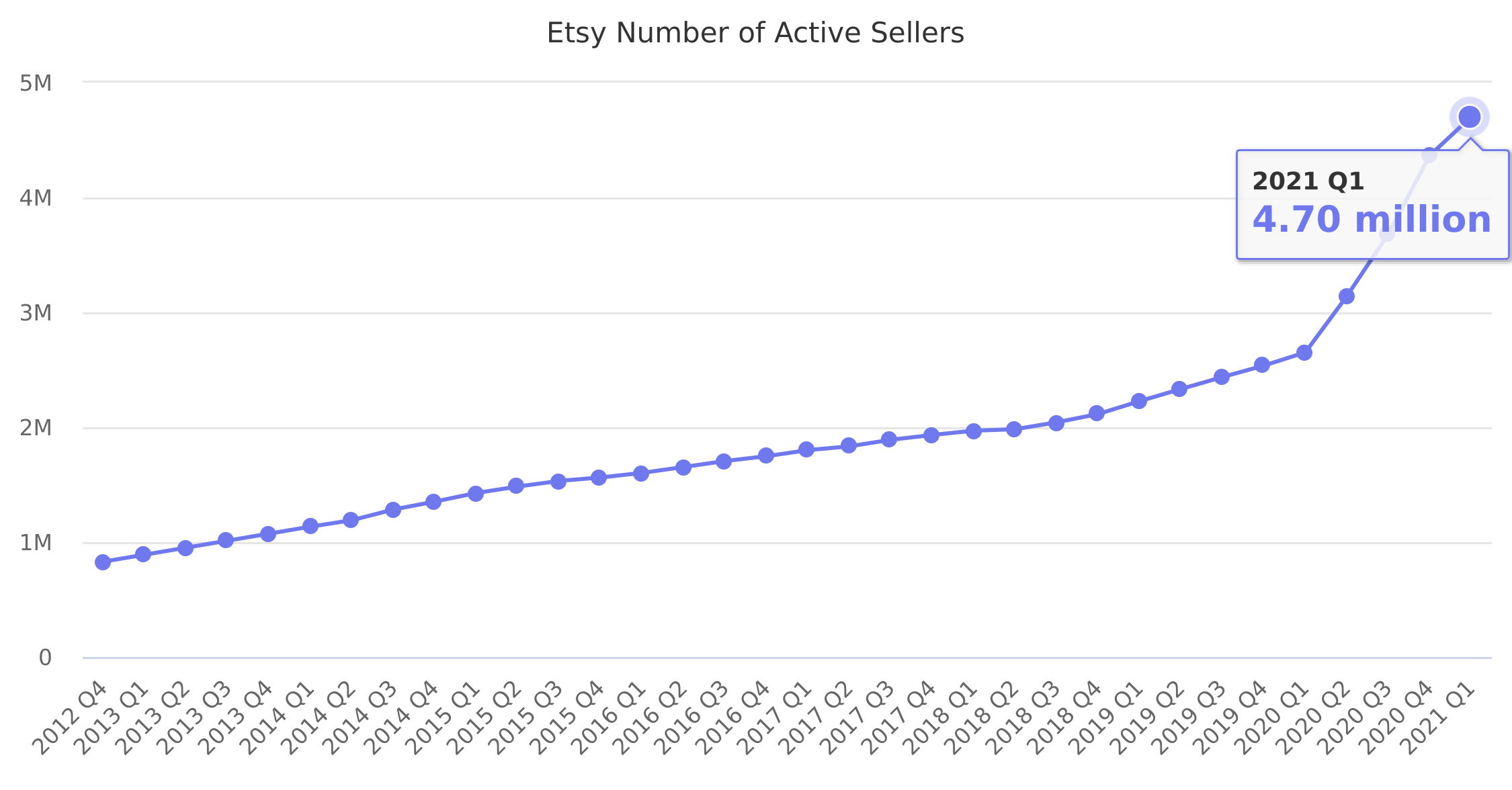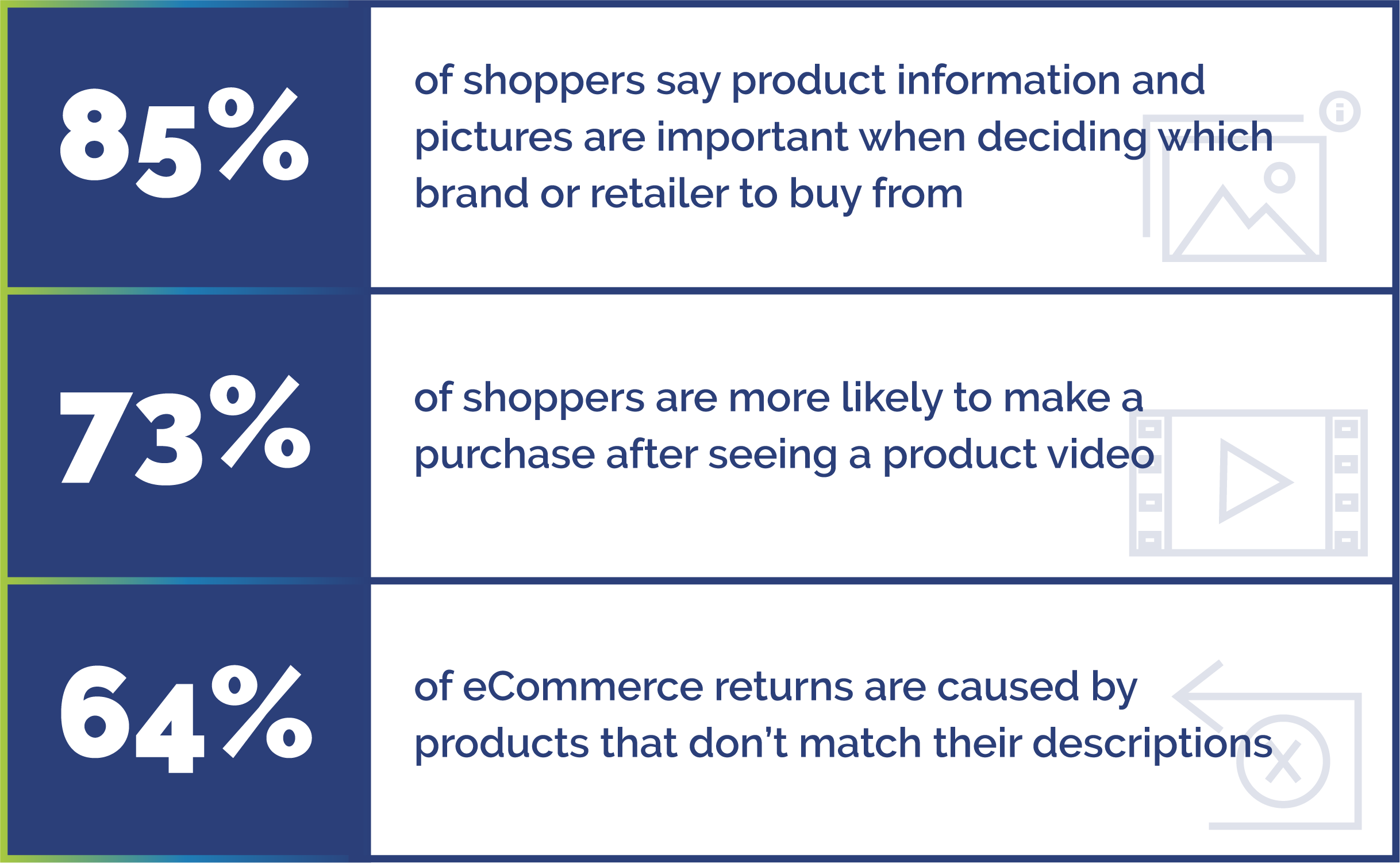Why Brands Should Consider Online Marketplaces – Key Elements That Lead to Success

April 20, 2022
Much of the world has turned to eCommerce in the past few years. With over 85% of people globally choosing to shop online in 2020 alone, a spotlight has fallen onto digital marketplaces in particular.
Many businesses are scrambling to get online, and marketplaces offer an accessible and inexpensive alternative to setting up an independent online store—or perhaps even a new channel to be used alongside your main eCommerce storefront. Online marketplaces like Amazon, eBay, and Wayfair offer access to massive existing, loyal customer bases. They can help your business compete with well-known brands, enable you to easily collect reviews that support your products, and even provide fulfillment support.
Let’s take a closer look at this scalable opportunity to grow as a business, reaching a wider audience with a smaller investment.
What is an Online Marketplace?
In simple terms, an online marketplace connects sellers and shoppers by allowing multiple third-party vendors to list their products on a single eCommerce website. From there, there’s quite a bit of diversity.
You’ve certainly heard of the top marketplaces; Amazon, eBay, Walmart Marketplace, and Etsy, but there are over 100 online marketplaces covering absolutely every niche you can imagine.
Some will accept absolutely any sort of product, such as Amazon. Some host only a specific type of product, like Etsy’s focus on vintage and hand-made items. Some like Walmart Marketplace curate products and vendors, while others like eBay are essentially one big free-for-all. All that matters is that a marketplace offers access to multiple third-party sellers, be it operating on a B2C, C2C, or B2B model.
Digital marketplaces by definition control the transactions. Most also receive a fee for each item sold on their platform. But other benefits like customer support, shipping, and returns depends on the platform. That’s why it’s crucial for brands to find the right marketplaces to sell their products to the right audience, and get the support they need.
How Online Marketplaces are Evolving
Online marketplaces have been around for several decades, but they’ve been quickly evolving with the pandemic in particular pushing drastic change.
In 2020, 92% of consumers shopped with online marketplaces, with 74% of those using Amazon and 48% eBay. Many consumers bought online to protect themselves during the pandemic. Even groceries and other essentials could be delivered to the doorstep with no reason to step outside.
Though the business world is slowly moving to a post-pandemic normal, there’s no sign of this trend decreasing. Many people still prefer to do their shopping from home. Customers actually spent 14.2% more time online in 2021 due to the pandemic, so this is one that’s likely to stick.
Amazon in particular grew, with a profit surge of 200% since the start of the pandemic. Many customers choose to use marketplaces like Amazon because they’re familiar, and they may receive rewards or discounts for shopping there that make them hesitant to branch out into unknown services—such as your personal eCommerce website. It’s no wonder that over 200,000 new sellers joined Amazon in 2020 alone.
B2B eCommerce is yet another high-potential market that still has plenty of room for investment in B2B online marketplaces. The industry is already worth 7.72 trillion and is projected to grow to 25.65 trillion by 2028. Wholesale marketplaces are popping up more and more frequently, selling stock in bulk or sometimes even competing services from several vendors.
Whether you own a B2B or B2C business, the expansion options offered by marketplaces make them a valuable channel to consider.
Benefits of Selling on Digital Marketplaces
Succeeding in the digital world means being agile, staying on top of the trends and finding customers where they are. You can’t always afford to let them come to you, and you don’t have to. Digital marketplaces are where the consumers are at. If you want to open up a new channel that allows your brand to reach a global audience, this is one way to do it, fast.
For example, sellers that join Etsy have nearly instant access to a buyer community of more than 39 million people across the US and 233 other countries. Even for established brands, that kind of targeted audience reach may be difficult to attain, and even harder to retain. So it’s no surprise that nearly a million new sellers became active on Etsy in 2021, up 21% year over year.

Many marketplaces also have a significant SEO footprint, increasing the number of buyers who see each product. Further, some marketplaces have their own SEO-like algorithms, which you can use to boost your products to the top of the platform’s search results.
Fulfillment support is another major benefit. The Fulfill By Amazon (FBA) program allows sellers to get their products to customers quickly, without the major investments and headaches of traditional drop shipping fulfillment. According to Amazon, sellers using the program can realize more than 30% lower shipping costs, as well as a 20-25% increase in sales. Other marketplaces boast similar programs to encourage new sellers to sign up.
Many eCommerce businesses choose to host their products on marketplaces for these reasons, but this is also an excellent opportunity for brick-and-mortar stores as well to get their products online with a minimal risk and cost.
Challenges Related to Online Marketplace Selling and How to Overcome Them
While online marketplaces do offer a plethora of benefits for brands of any kind, there are notable challenges to successfully selling on such platforms. Walking into this situation without being ready for these can result in a logistical nightmare. Obstacles to success include:
- Providing accurate inventory data and keeping stock up to date on both ends.
- Keeping track of customer orders, especially if you use multiple digital marketplaces.
- Exporting accurate, properly formatted, and up-to-date product info.
- Tracking sales data from all the platforms you sell on.
- Using several marketplaces at once and complying with their different rules for order processing and product formatting.
While these issues occur across multiple channels, there’s a clear underlying issue here: Difficulty managing product and order data across several channels.
The solution? Automation.
Trying to manually keep track of all this data is simply unsustainable. Editing clunky spreadsheets every time you get a stock shipment or receive an order, tracking down emails, or even using paper documents hinder your growth and blunt your competitive edge. To keep critical information consistent across internal and external channels, as well as the fulfillment process, you need solutions that connect them all.
A marketplace integration will save hours of time. By integrating your marketplace channels with your internal systems, you can ensure that stock is always up to date, meaning no more “out of stock” surprises for your buyers.
Order management is a breeze too. A single integration eliminates the need to log into multiple marketplaces one by one to check on all your orders and move them into your ERP system. Instead, the integration automatically pulls new orders into your systems to jumpstart order processing. Because the data is exchanged electronically, you also avoid countless errors from manual data entry.

Finally, there’s the challenge of creating consistent rich product content to all channels. Without automation, the process of retyping descriptions and reuploading images can be more than time-consuming; it can lead to mistakes and inconsistencies that hurt your brand image. On marketplaces, these issues can even result in low ratings that hinder your products’ visibility and sales.
Product Information Management (PIM) software makes this easier by allowing you to centralize product content in a single platform. You can map data to meet specific online marketplace requirements, such as using “in” vs “inches” vs “in.” depending on the site. You can create marketplace-specific titles and descriptions for better SEO visibility. You can even verify product content readiness against all your (and your marketplaces’) mandates, before publishing content to your channels.
Reach a Wider Audience
There’s a reason business of all sizes, and across industries, are investing in Marketplaces at a rapid rate: the opportunity for growth with limited risk is undeniable. That said, to really succeed in this space, you need to have the best buying experience possible, from content, to availability awareness, to fulfillment. Automated, integrated solutions offer the perfect way to connect these platforms, so your business can enjoy the benefits of marketplaces, without all the headaches.
Interested in adding marketplaces to your omnichannel strategy, or want to increase the effectiveness of your current marketplace listings? Reach out to us and we can help you get started.
About the Author: Lanette Young is a Product Manager for TrueCommerce specializing in eCommerce, with over 14 years of experience working with businesses to establish and manage successful online stores. She is a graduate of the University of Southern California and now lives with her husband in Atlantic Beach, FL. In her spare time, you can find her at a local barre studio teaching or taking class.
Share this post:
Stay ahead of the competition
Get expert supply chain insights delivered directly to your inbox weekly.
